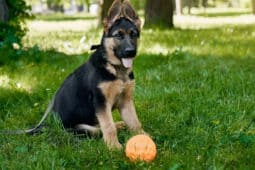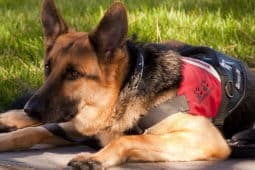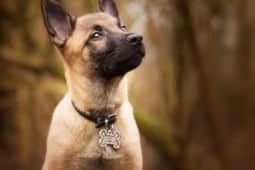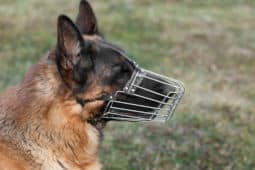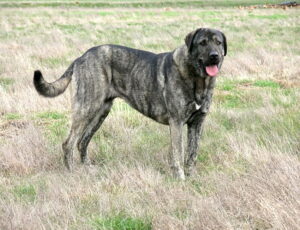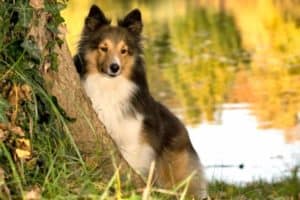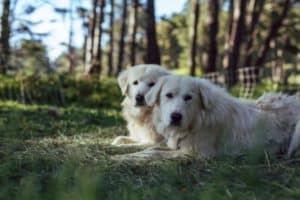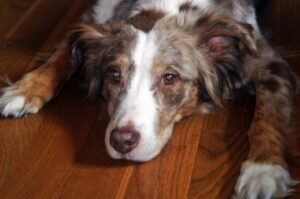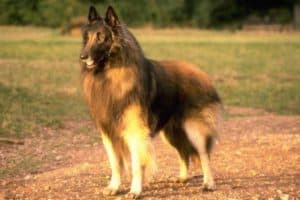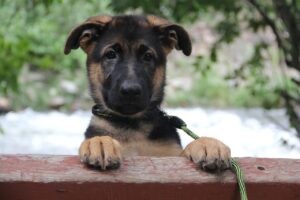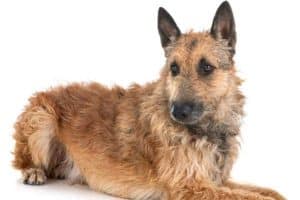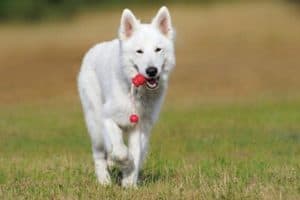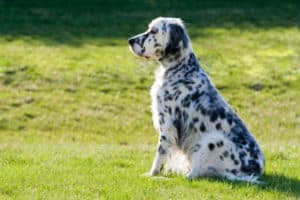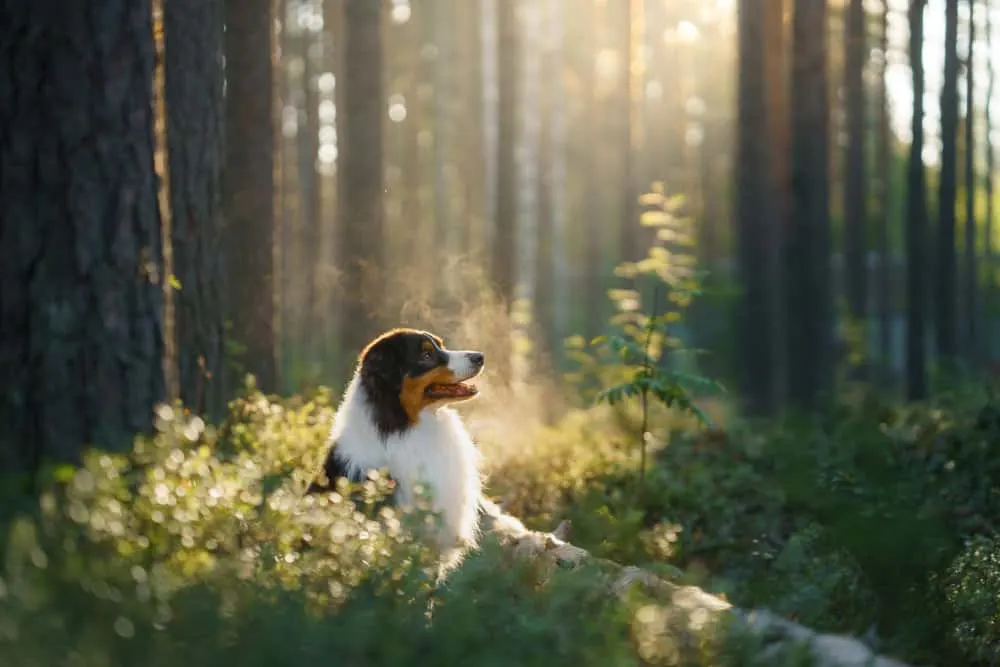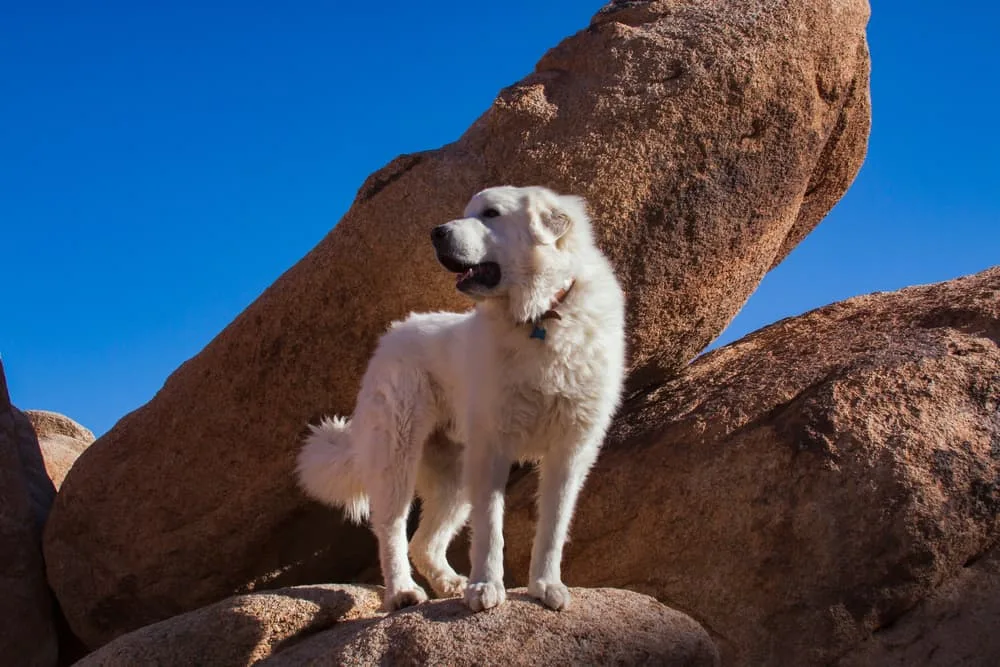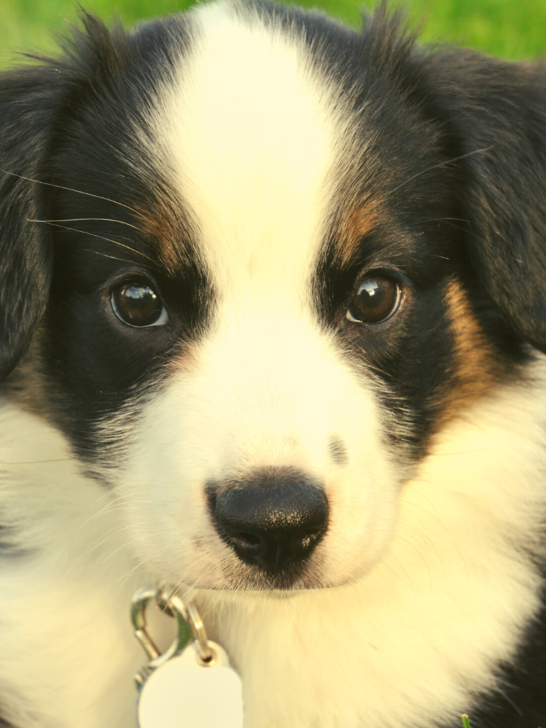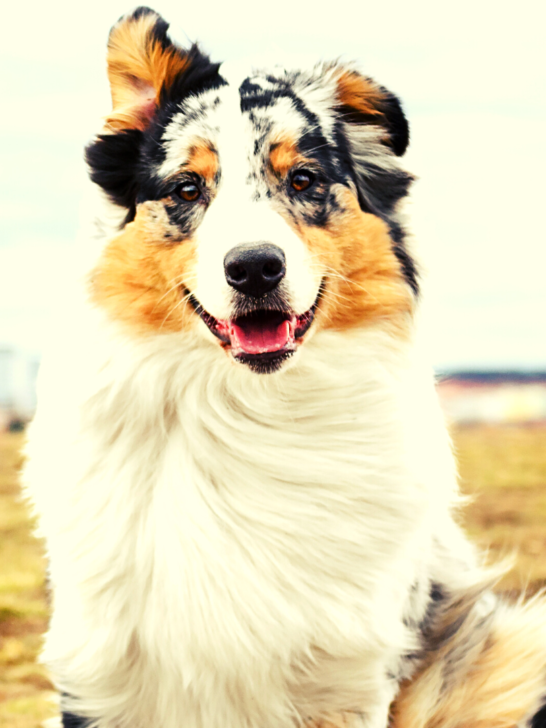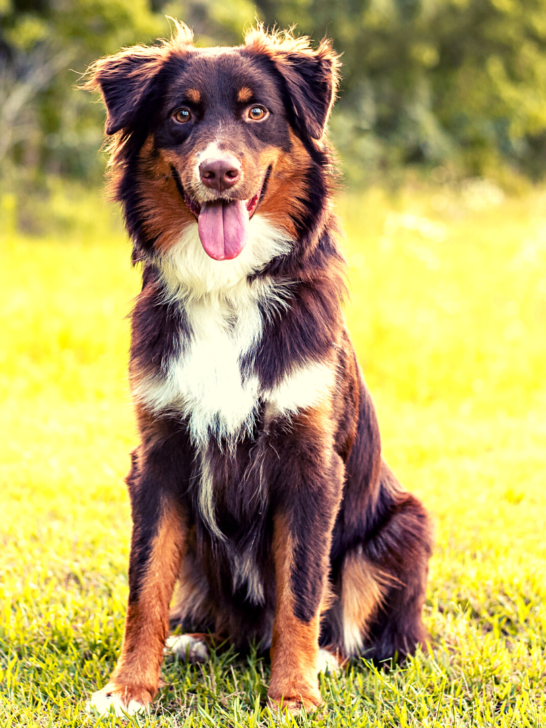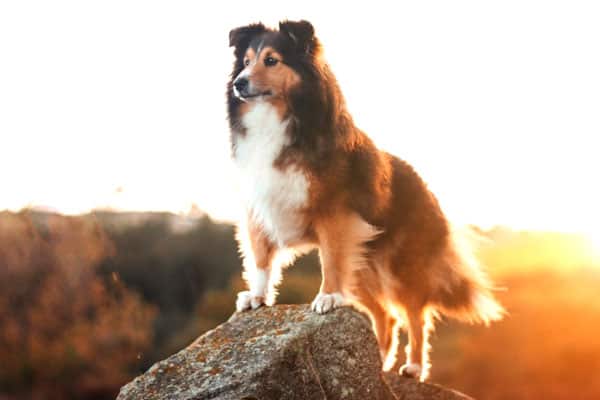Australian Shepherd Great Pyrenees Mix: Learn All About the Endearing Aussie Pyrenees
The Australian Shepherd Great Pyrenees mix is one of many new dog breeds-in-progress. Breeders often call these dogs hybrid dog breeds, although the more accurate term is crossbred dog breeds.
Anytime you choose a newer breed as your new companion canine, it can be extremely helpful to do some research in advance to learn what your new pup might be like.
We will talk about why that is the case, what to expect and how to prepare to welcome your Australian Shepherd Great Pyrenees mix dog to the family.
Let’s get started!
Australian Shepherd Great Pyrenees Mix
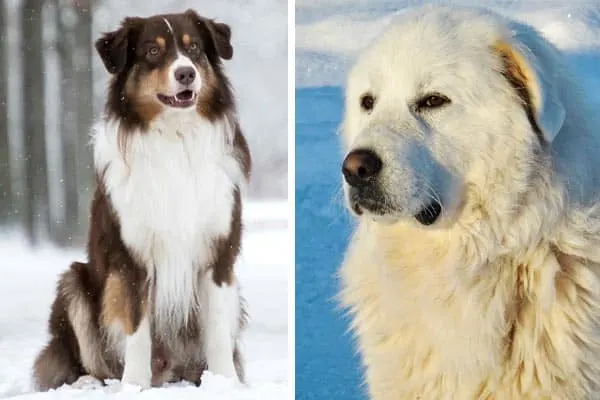
At the simplest level, the Australian Shepherd Great Pyrenees mix has one purebred Australian Shepherd parent and one Great Pyrenees parent.
With most hybrid or crossbred dog breeds, breeders will take the two founding breed names and mix them together to describe the new dog breed.
In this case, the Australian Shepherd Great Pyrenees mix becomes the Aussie Pyrenees.
Meet a Cute Australian Shepherd Great Pyrenees Mix Puppy
This YouTube video takes you on a journey in the life of one family who adopted an Australian Shepherd Great Pyrenees mix puppy.
You get plenty of time up close and personal with their cute puppy and then you can hear more from her new owners about her personality and temperament.
How the Australian Shepherd Great Pyrenees Mix Breeding Process Works
Hybrid or crossbred dog breeding isn’t the same as purebred dog breeding. It also isn’t the same as the process that creates a true mixed breed dog, or “mutt.”
With a hybrid or crossbred dog breeding program, the breeder works very specifically with only two (or sometimes three) purebred dog lines.
In the case of the Australian Shepherd Great Pyrenees mix, there are two purebred lines (or “P” generation lines): the Australian Shepherd and the Great Pyrenees.
The original or founding litter of puppies will have one parent dog from each purebred line. This is called the “first generation” or “F1” litter.
But then as the new breed of dog is developed, subsequent litters will begin to blend the two breed lines together more and more.
As Breeding Business explains, here is a brief snapshot of how that occurs.
- F1: Original or “founding” litter with two different purebred dog breed lines.
- F1b: One parent dog is purebred and the other is a hybrid (Australian Shepherd Great Pyrenees mix from the original F1 litter). This is also sometimes called “back-crossing” the breed line.
- F2: Both parent dogs are F1 hybrid dogs.
- F2b: One parent dog is an F1b hybrid dog and one parent dog is an F2 hybrid dog.
Why Understanding Hybrid Dog Breeding Is Important for Puppy Selection
It’s important because it’s literally impossible for a breeder to predict how each parent dog’s genes will combine within a given puppy for each litter.
The breeder won’t be able to know which puppy will look or act more like one parent dog or the other.
However, these types of differences between the puppies will be much more pronounced in earlier generation breeding programs.
F1 and F1b breeding programs will distribute a lot more genetic variation between the puppies. F2 and later breeding programs will start to produce puppies that act and look a lot more like each other as they grow up.
How might this work as you search for your Australian Shepherd Great Pyrenees puppy?
Let’s take a very simple example.
Let’s say you want a dog that acts more like a Great Pyrenees dog but looks more like an Australian Shepherd dog.
There is a very specific way you can go about searching for a crossbred Australian Shepherd Great Pyrenees mix puppy with these exact characteristics.
What you want to do is look for a breeder that works specifically with later stage (F2 or later) Australian Shepherd Great Pyrenees breeding.
Later stage breeding programs will show more uniformity between the puppies.
So now let’s look more closely at the type of genetic variety you might expect to see in a litter of Aussie Pyrenees puppies.
Meet the Parent Dogs: Australian Shepherd Great Pyrenees Mix
The first place to research when learning about your Australian Shepherd Great Pyrenees mix puppy is in each parent dog breed’s history.
The American Kennel Club (AKC) states that the Australian Shepherd is the 17th most popular pet dog (out of 197 purebred dog breeds to choose from).
Australian Shepherd
So we already know that the Australian Shepherd has great qualities that people look for in a companion canine.
Interestingly, the Australian Shepherd is actually a mix of three breed lines from Europe, Australia, and the United States.
In fact, the official breed name is somewhat misleading.
This breed actually originated in Europe, migrated to Australia, and then finally became a favorite performing, ranching and cowboy herding dog in the United States.
Australian Shepherds are true working dogs – they’re smart and athletic enough to do just about any job.
Great Pyrenees
Next, let’s turn our attention to the Great Pyrenees dog breed. The Great Pyrenees, as the American Kennel Club (AKC), points out, is the 66th most popular purebred.
While the AKC doesn’t elaborate, it’s safe to assume these dogs may be less popular because of their enormous size.
Not everyone can accommodate the needs of a dog that can easily weigh in at 100+ pounds in adulthood!
The Great Pyrenees is named after the Pyrenees Mountains, which is only one reason why this dog breed is frequently described as “majestic.”
Not only are these dogs impressive to look at, but they also have an impressively noble history.
They have even been dubbed the Royal Dog of France, thanks to King Louis XIV, who was a great admirer of the breed.
Vital Statistics: Australian Shepherd Great Pyrenees Mix
One of the biggest variables to consider, especially if you buy your puppy from an early stage hybrid breeder (F1 or F1b), is going to be your dog’s adult size.
Other things worth considering are the coat type, health, and life expectancy.
We’ll take a closer look at what you can expect in each of these categories in this section.
Australian Shepherd Great Pyrenees Size
The best and most reliable method for estimating your hybrid dog’s adult weight and height is to look at the averages for each parent dog breed.
In this case, the Australian Shepherd typically weighs 40 to 65 pounds and stands 18 to 23 inches tall (measured from paw pads to shoulder tops).
Female Aussie Shepherds tend to be about two inches shorter and 10 pounds lighter than males.
The great Pyrenees, in contrast, typically weigh anywhere from 85 to 100+ pounds in adulthood and stand 25 to 32 inches tall (paw pads to shoulder tops).
Female Great Pyrs tend to weigh about 15 pounds less than males and be about two inches shorter.
This tells us that your Aussie Pyrenees could potentially weigh anywhere from 40 to 100+ pounds and stand anywhere from 18 to 32 inches tall.
More realistically, however, what you get when you average those numbers together is a crossbred Aussie Pyrenees that weighs about 70 pounds and stands about 25 inches tall.
Australian Shepherd Great Pyrenees Coat Type
Next, let’s take a look at your crossbred dog’s potential coat types.
The Australian Shepherd has a medium-long coat that is double layered, and sheds year-round and seasonally.
The Great Pyrenees has a long coat that is double-layered, and sheds year-round and seasonally.
From this, you can anticipate that your Australian Shepherd Great Pyrenees puppy will grow up to have a medium to long double-layered coat that sheds seasonally and year-round.
Australian Shepherd Great Pyrenees Health and Life Expectancy
Finally, let’s look at your puppy’s life expectancy and overall health genetics.
Australian Shepherds typically live 12 to 15 years. The Great Pyrenees have a life expectancy of 10 to 12 years.
So your Aussie Pyrenees may live anywhere from 10 to 15 years, with 13 years being a reasonable average.
The Canine Health Information Center (CHIC) database states that the Australian Shepherd’s major genetic health issues include eye issues, autoimmune thyroiditis, hip, and elbow dysplasia.
The Great Pyrenees dog’s major genetic health issues include hip dysplasia, patellar luxation, cardiac, eye, and thyroid issues.
This helps you choose a reputable breeder that can show you clear test results from each of your puppy’s parents.
With this information in hand, you can have your best chances of picking the Australian Shepherd Great Pyrenees mix puppy that is right for you.
Our YouTube Video On The Great Pyrenees Australian Shepherd Mix
Frequently Asked Questions
How Big Are Great Pyrenees Australian Shepherd Mix?
It is important to consider the fact that this dog will inherit its genes from two dogs that are large breeds, but that have two different weights and sizes. A Great Pyrenees weighs about 30 to 110 pounds, and an Australian Shepherd weighs around 35 to 75 pounds.
So, you can expect your Great Pyrenees and Australian Shepherd mix to weigh around 50 to 110 pounds. You can also expect them to be a large dog that stands at around 25 to 32 inches tall.
Are Great Pyrenees Good House Dogs?
The Great Pyrenees breed can make a great companion in your home if you are someone that lives in a suburban or rural area, and you lead a fairly placid life.
These dogs enjoy having their own quiet time when they are at home, and they like to have a predictable and orderly routine in order to provide them with stability.
They have a guarding nature, which means that socializing these dogs is really important, and they should be exposed to as many new people, places, and situations as possible, especially when they are a puppy. This should help to control any excessive protectiveness.
They are also calm and well-mannered dogs that are known for being devoted to their families, including well-behaved children.
Great Pyrenees are generally trustworthy, affectionate, and gentle, but they also will not hesitate to protect their family if they feel that they need to.
They are also quite independent by nature, so they don’t need constant attention like some other dogs. You should also know that their guarding history provides them with strong instincts to bark.
Are Great Pyrenees Cuddly?
Yes, Great Pyrenees dogs are big and fluffy dogs that love to cuddle and show affection when it comes to their family.
The level of affection that they show you will depend on their individual personality, but they will usually show affection through nuzzling, licking, snuggling, and asking to be pet.
Some of these dogs will show their affection by licking you, and many dogs will do this to show that they care. This might seem a little gross for some people, but you should know that they only have your best interests at heart when they are doing this.
Another way in which they might try to show you their affection is by getting super excited when you come home.
Even if you have only been gone for a short amount of time, you shouldn’t be surprised if your dog tries to knock you over with their high levels of affection when you get home.
This is usually combined with high amounts of excited tail wagging and vocalization.
Are Great Pyrenees Easy to Train?
The Great Pyrenees is a highly intelligent dog that is more than used to working on their own and having to figure things out for themselves.
This can be a great trait to have for a variety of reasons, but it can sometimes make things difficult when it comes to training.
This is certainly a dog that needs to be trained, as without the proper training, they can easily become uncontrollable.
Training a Great Pyrenees is going to take a lot of consistency, patience, and positive reinforcement. They might not be suitable for owners that do not have the time to put in a good amount of training work.
You should also know that due to their parentage, they are intelligent and ready to please, so they might not always be so difficult to train. It will all depend on their personality and how they respond to your training methods.
Positive reinforcement techniques, like treats and praises, are usually the most effective when it comes to training this breed of dog.
You should start light training with your puppy as soon as you bring them into your home/ Both house training and obedience training are equally important.
For the best results, you can also consider taking them to an experienced trainer.
Do Great Pyrenees Need a Companion?
It is thought that the majority of Great Pyrenees will enjoy the company of another dog of the same breed, and they typically thrive with their companionship.
However, the two temperaments of the dogs will need to be compatible in order for them to get along well.
Due to their natural stubbornness, nothing can motivate these dogs to do anything that they don’t want to do, including welcoming a new dog into the family, so you need to make sure that they are a compatible match.















